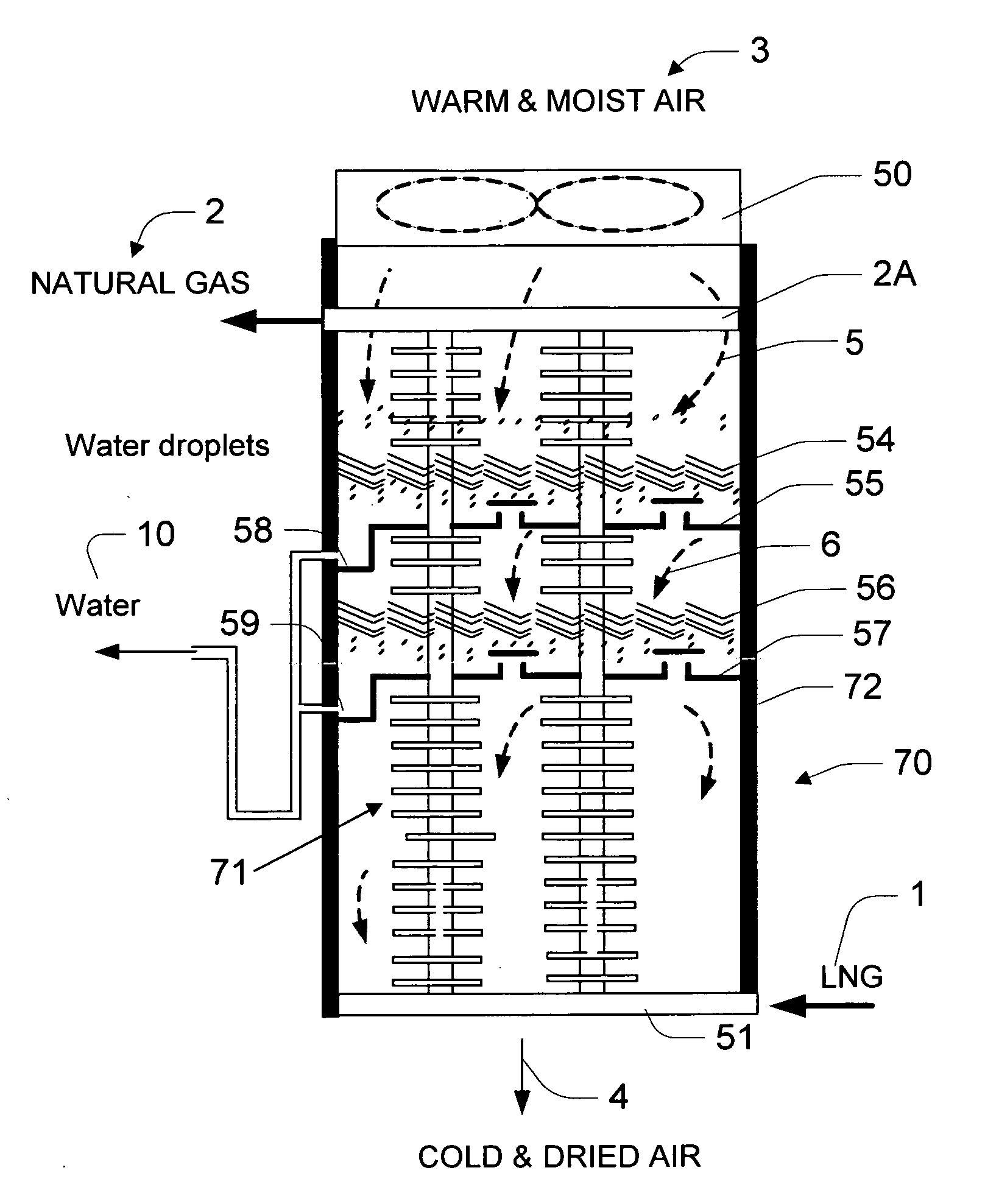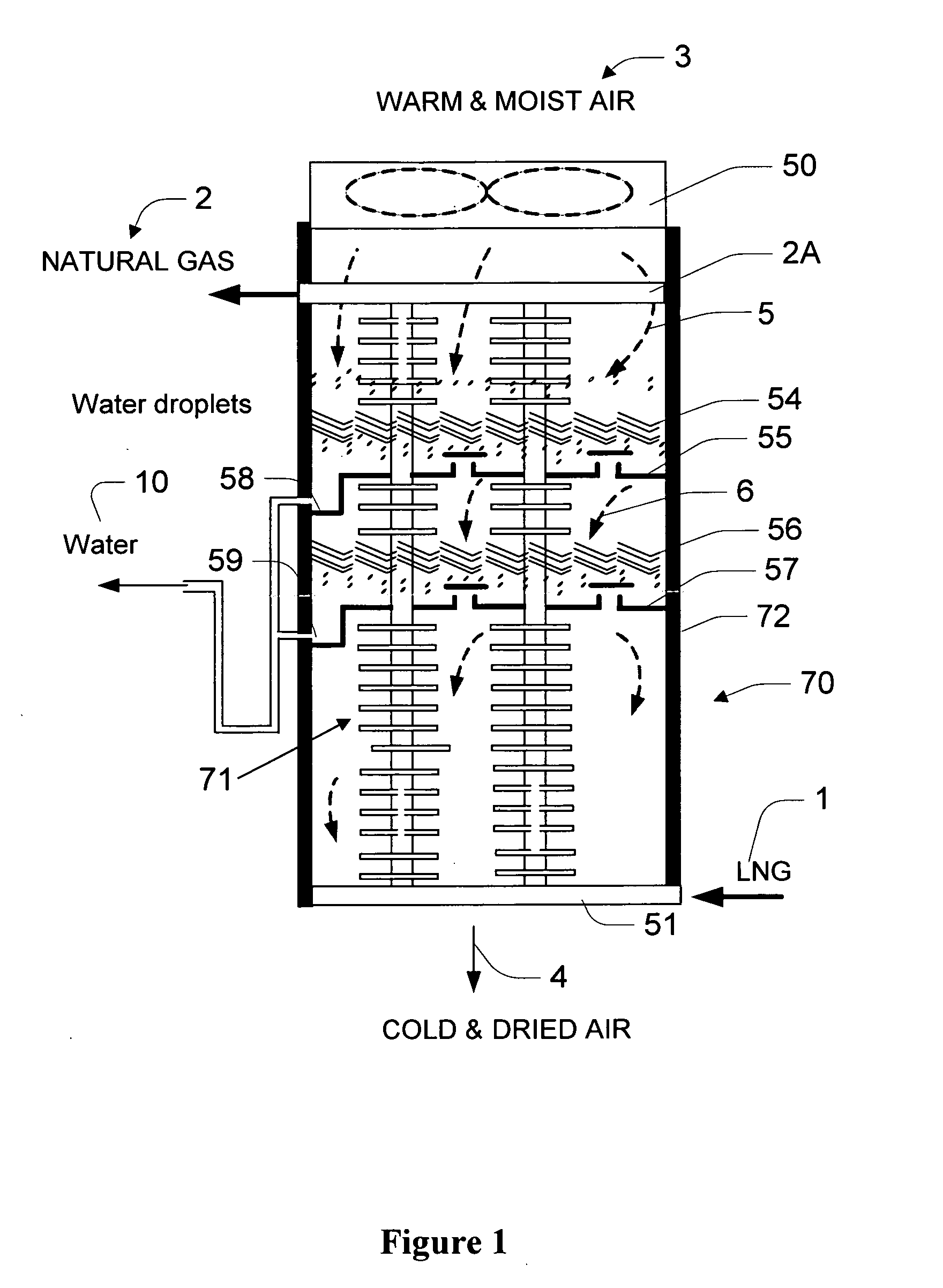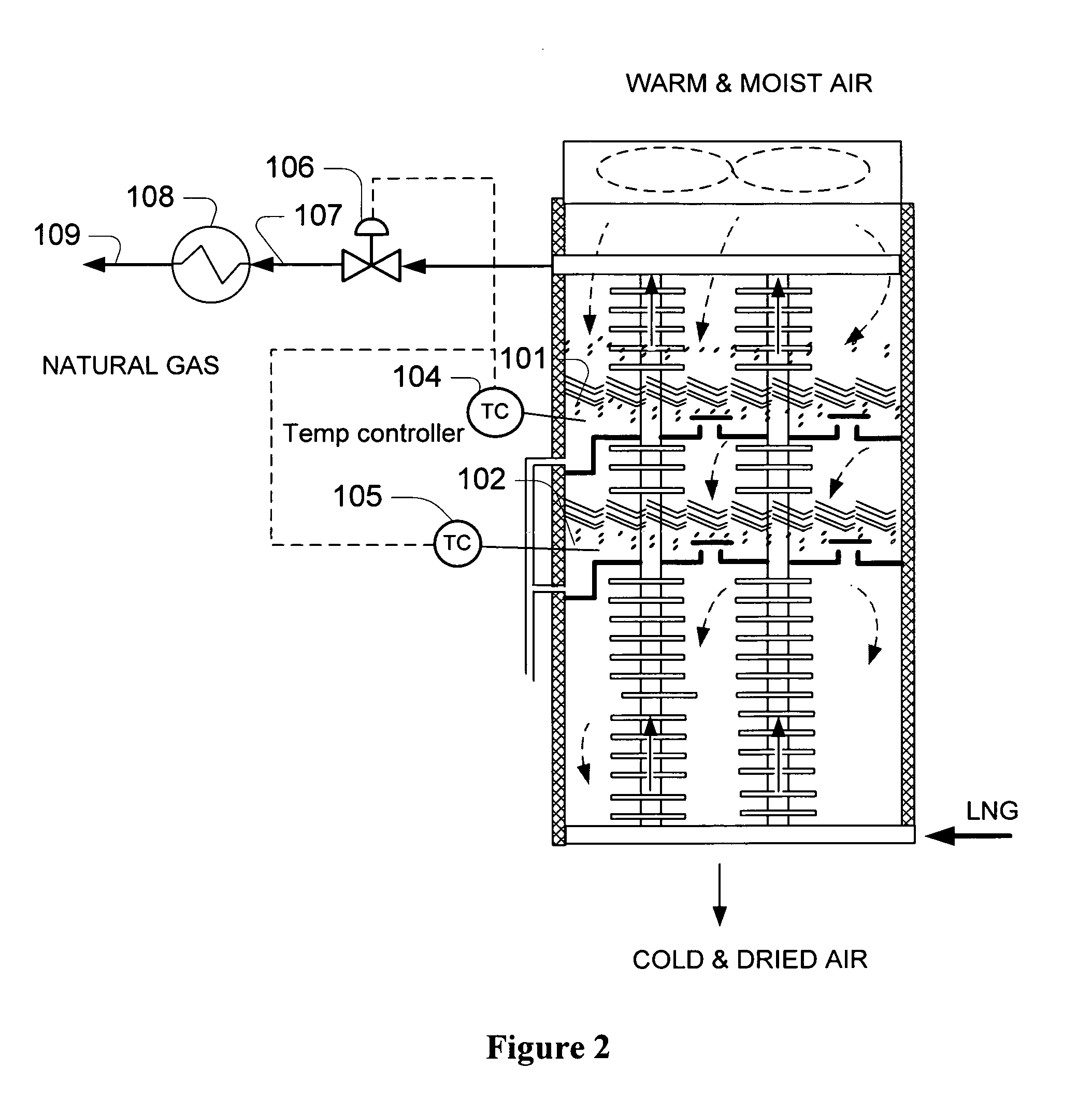Configurations and Methods for Ambient Air Vaporizers
a technology configuration method, which is applied in the direction of fluid transfer, container discharging method, gas handling/storage effect, etc., can solve the problems of uneconomical or even impractical, the footprint of ambient air vaporizers for regasification of lng is rather large, and the vaporization duty of currently known ambient air vaporizers is small, so as to achieve the effect of reducing energy consumption
- Summary
- Abstract
- Description
- Claims
- Application Information
AI Technical Summary
Benefits of technology
Problems solved by technology
Method used
Image
Examples
Embodiment Construction
[0020]The inventor has discovered that defrosting of ambient air vaporizers can be reduced or even be entirely avoided in devices and methods in which water is condensed and removed from ambient air in a section of the vaporizer that operates at a temperature at about or above the freezing point of water and in which the so cooled and dried air is then further used for vaporization in another section of the exchanger. Most preferably, such sections are arranged in series and employ forced air flow, and the moisture is removed from the warm section of the vaporizer using various devices that may include a coalescence filter, separation device and condensate drain system. Most preferably, a control system is implemented that provides frost free operation under various ambient temperatures and relative humidities.
[0021]It should be appreciated that such configurations eliminate or reduce defrosting time, increase the on-stream operation, and reduce heat exchange size and plant footprin...
PUM
 Login to View More
Login to View More Abstract
Description
Claims
Application Information
 Login to View More
Login to View More - R&D
- Intellectual Property
- Life Sciences
- Materials
- Tech Scout
- Unparalleled Data Quality
- Higher Quality Content
- 60% Fewer Hallucinations
Browse by: Latest US Patents, China's latest patents, Technical Efficacy Thesaurus, Application Domain, Technology Topic, Popular Technical Reports.
© 2025 PatSnap. All rights reserved.Legal|Privacy policy|Modern Slavery Act Transparency Statement|Sitemap|About US| Contact US: help@patsnap.com



